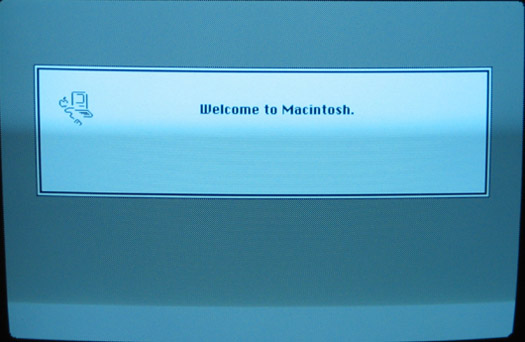

It is hard to believe that 20 years ago my roommate Rob Boody and I put our money together and bought one of the very first Macintoshes sold in Utah. $2500 for the computer, $500 for the Imagewriter printer. We bought it on January 24th, 1984, at Allen's Computer Store run by my cousin Bob Allen. (This was part of Allen's Camera.)
We knew that it would change the world. I started a Macintosh programming club at Brigham Young University and within a year I was working at Apple. Before we knew it, our parents were using Macs! This was truly the computer for the rest of us, as the ads said.
Original Macintosh Specifications:
In fact it totally changed the course of my life.
The Macintosh had one simple manual. Previously computers had large sets of manuals.
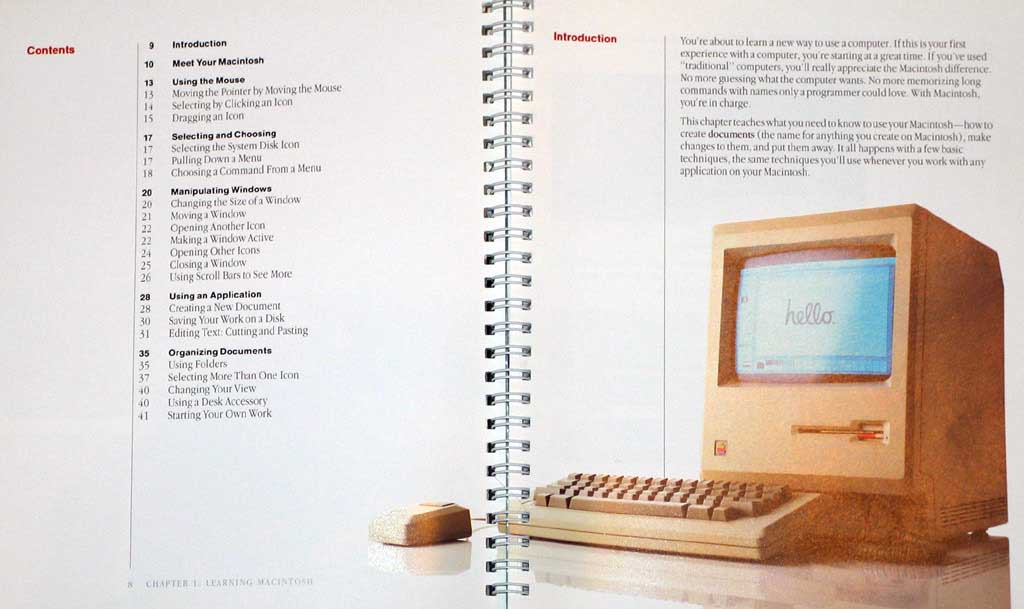
Later in 1984 the Macintosh Development System or MDS was released. It was an editor, an assembler, a linker, a resource compiler, and an executive processor. This software kit included a serial cable as early debugging was done from another computer.
It was the first software development environment that ran on the Macintosh. Early Macintosh development was done on the Apple Lisa computer, but I helped create, with a great team, a follow-on to MDS called MPW, the Macintosh Programmer's Workshop. That ran on the Macintosh Plus and later machines, and it is still the best dev-environment around. Apple has discontinued supporting it, which is a terrible crime.
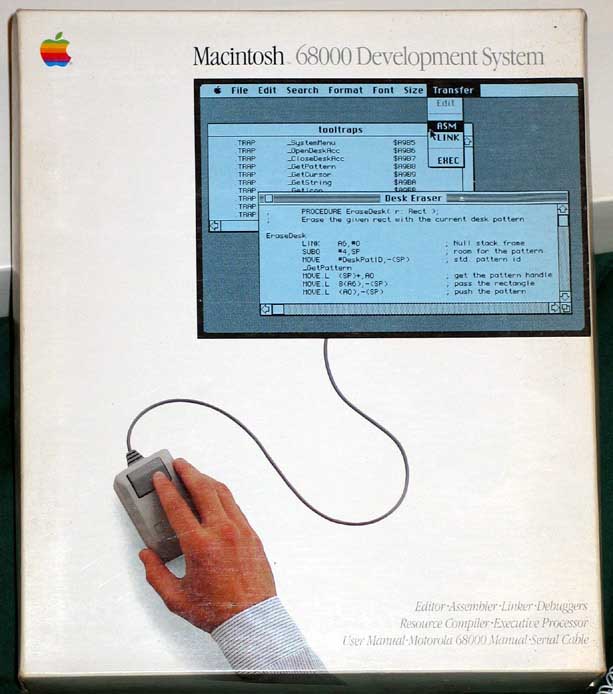
In September 1985 Apple upped the memory to 512K, and in January of 1986 they went to 1 MB of memory in the Macintosh Plus. The Macintosh Plus had a SCSI port for hard disks and eventually CD-ROMs, and it had larger ROMs (128 KB) with a faster version of QuickDraw and some new User Interface features. At the same time they introduced a 512 KB version with the new ROMs and it was called the Macintosh 512Ke, "e" for enhanced.
I happened to find tonight (Jan 23, 2004) a software kit largely untouched from a new 512Ke that I had years ago. Here is the packing list of what came with each Macintosh. The original 128K Macintoshes also came with the audio tape. Notice the registration card's fun phrase next to the packing list.
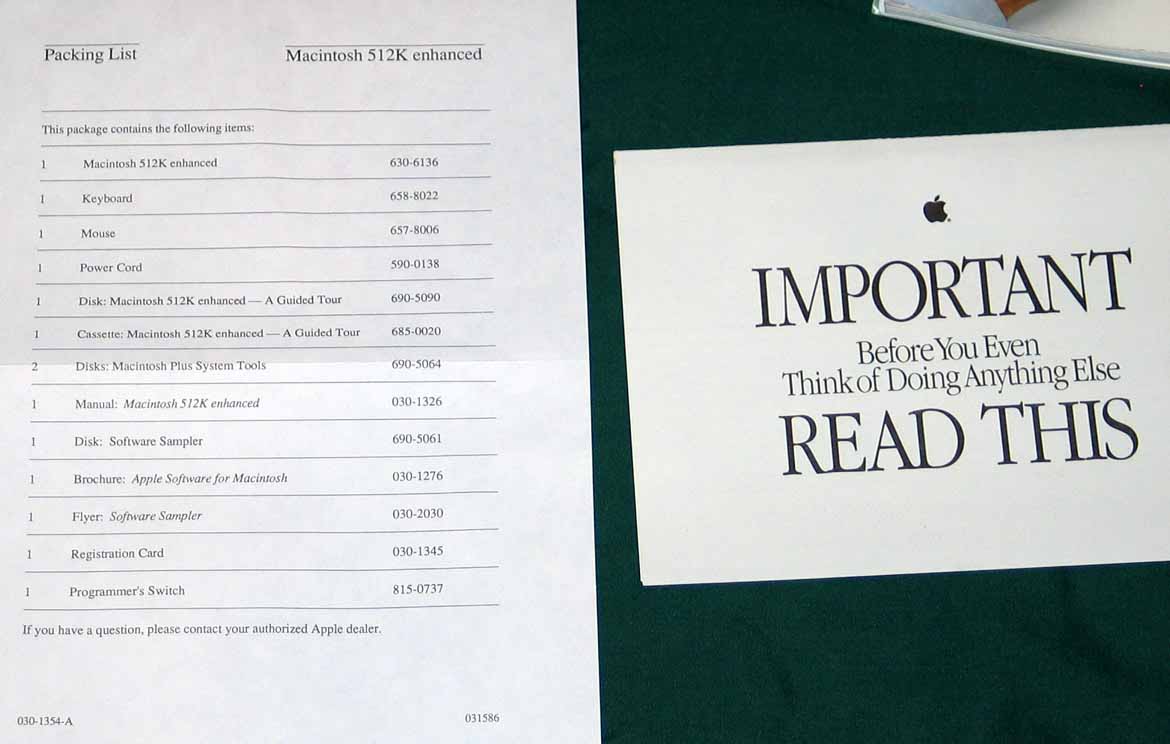
Here are some of my original docs and materials from early Macs. The original 128 K Macintosh manual is in the center. That graphic of the Mac done "Picasso-style" was done by Susan Kare, the Macintosh artist.
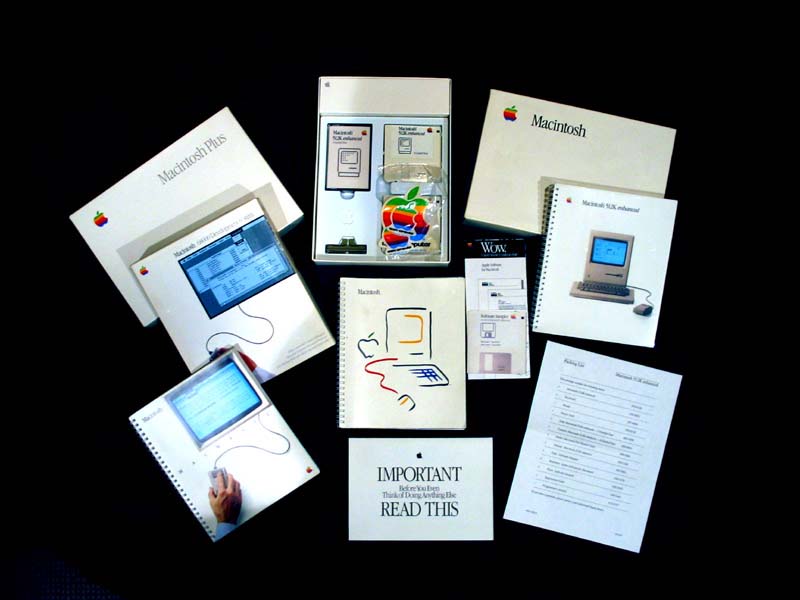
I booted up my old Macintosh Plus tonight. I found a random floppy in the storage bag and it booted up to an early version of Microsoft's Flight Simulator. It booted from a floppy very, very quickly.
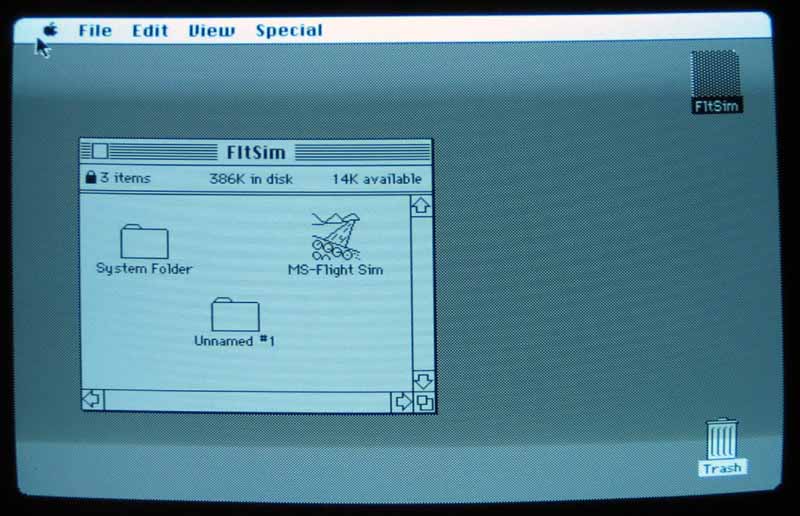
Here is my Macintosh Plus, which has been in my garage rafters for many years. I probably had not booted it up in over 10 years, but it fired right up.
Note: be careful about leaving old PRAM batteries in these old Macs. Two of my early Macs upon inspection tonight had their batteries corroding. I removed them and cleaned the areas and I think things are okay now, but I like a dummy stored these machines with batteries in them. If you have an old Mac, take the battery out! (The batteries look like AA batteries but they are not. They are 4.5 Volt #523 or NEDA 1306A batteries.)
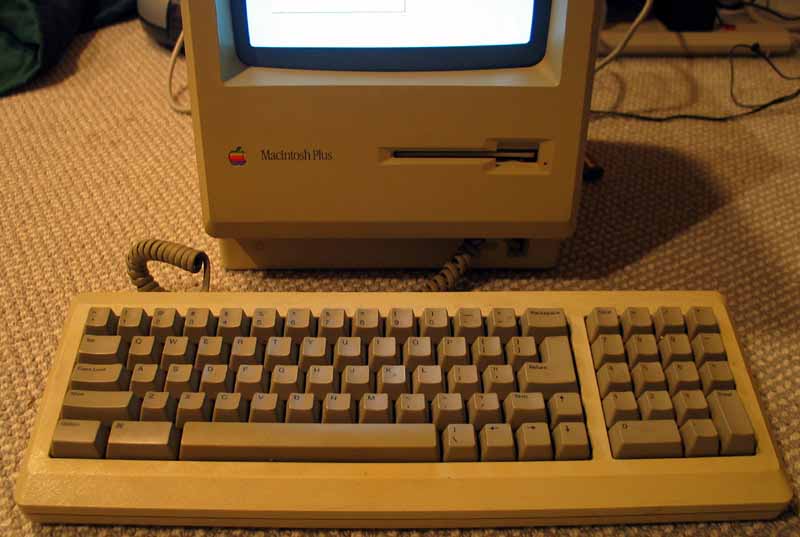
The following screen shot was taken with my digital camera tonight, but I have reproduced it here at roughly the original resolution of 512 x 342 pixels. The dark and light bands are due to its refresh cycle, like when you try and take a photo of a TV. Actually it looks very even and nice.

Created: 23 Jan 2004 Modified: 25 Jan 2004Thanks to Paul Russell, Harvey Alcabes, and Jonathan Levi for their corrections.